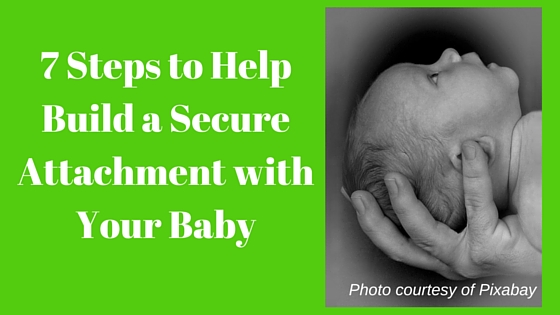Do you need to exclusively breastfeed to build a secure, loving connection with your baby? Is wearing your baby on your body the only course toward his or her future positive self-esteem and emotional stability? Must you co-sleep, lest your baby’s experience of safety be forever destroyed?
And what if you do all of the above pieces? Will your child be guaranteed a secure attachment?
Not necessarily.
It can be easy to look at parenting styles and suggestions in black-and-white terms. But, like most other things, parenting involves a lot of gray area.
Absolutely, breastfeeding, baby-wearing, and safely co-sleeping can be wonderful ways to nurture a secure attachment with your baby. Doing so with love and care can set you soundly on your way to a deep and lasting connection. However, building a secure attachment transcends any one parenting philosophy or method.
The most important thing is learning to work within your own situation to make parenting choices that address fundamental attachment needs.
What exactly is “attachment”? What makes it “secure”? Is “attachment parenting” the same thing?
Attachment theory very generally states that human babies and children will seek out a preferred caregiver for safety, comfort, and nurturance. Caregiving that is geared towards meeting the child’s many needs in these areas is essential for the child to learn to regulate his or her emotions, develop healthy self-esteem, and have successful relationships with others.
When a baby and growing child have these needs met consistently — meaning at least 80% of the time — by at least one loving caregiver, the child has a very good chance of growing up with a secure attachment. It is also essential that the adult caregiver repairs ruptures with the child in those times where things don’t go so well. Secure attachment will help your child deal with stress, avoid depression and anxiety more effectively, thrive independently, and enjoy comfortable connections with others in the future.
Attachment theory is a richly-developed body of work stemming from the psychological research of a pioneer named John Bowlby more than 60 years ago, and expanded upon by Mary Ainsworth. Since that time, hundreds of thousands of psychological researchers have continued to develop this important work and to implement the theory of attachment.
“Attachment parenting” on the other hand, is a popular parenting philosophy created from part of this theory, and developed by Dr. William Sears. “Attachment” – the theory, and “attachment parenting” – the popular parenting philosophy, are often confused. And, while they are related in some ways, they are not the same.
So, what exactly is “secure attachment,” and how can you form a secure attachment with your baby?
Begin by incorporating the following ideas into your parenting plan:
1. Make Eating, Sleeping, and Connection Time Positive, Routine Experiences. Use this early time to restore your energy and nurture your baby.
Your baby’s first few months are sometimes referred to as the fourth trimester. Your baby is just beginning to settle into his or her little body in the world outside of the womb. These months are an important time for setting the stage for many things, including eating, sleeping, and time to connect. They are an essential period of time to build a strong foundation for secure attachment. Try to adjust in response to your baby’s natural rhythms at this point. Make these experiences reliable, but not rigid, in their routine. This routine will help you to adjust to having a little person in your world as well, with its sometimes-steep learning curve.
2. Plan for Consistent Caregiving. Build safety and security.
It is true that a baby will be driven to be the most attached to his or her biological mother; that is nature’s survival plan. However, secure attachment is equally possible with a partner, grandparent, adoptive parent, or other steady caregiver, as long as care is consistent and loving.
A baby is drawn to attach most strongly to only one or two steady caregivers. Having this consistency as much as possible promotes secure attachment and maintains closeness in ways that can be difficult with an ever-changing network of parents, daycare providers, and babysitters.
3. Make Affection a Common Occurrence. Loving care is vital.
Cuddle, coo, and kiss your baby on a regular basis. Smile often. Skin-to-skin contact is incredibly nourishing for your baby’s nervous system. Nothing replaces the comforting expression of love a baby craves from his or her primary caregivers. Research shows that babies and children will consistently seek out a caregiver’s warmth and attention over food in the early months and years. This is one of the tenets of secure attachment.
4. Learn Your Baby’s Cries & Body Language. Be Your Baby’s Voice. Your baby is continually communicating with you.
Crying is communication for your baby. It is meant to be slightly (or sometimes more-than-slightly!) upsetting for you, so that you will quickly respond to your baby’s needs. Learn as soon as possible which cries your baby uses to mean I’m hungry, or I’m tired, or I need my diaper changed. Until your baby uses words, his body language, facial expressions, and cries will help you to communicate with him.
You help increase your baby’s trust in you and in the world when you respond accurately and also when you speak for her. When you say out loud, Wow, that was really scary for you, wasn’t it?, or Oh, are you hungry, Sweetie?, your baby will hear that you understand her (or let you know that is not what she meant at all). This dialogue not only helps your baby develop a secure attachment to you, but also helps her put names to her feelings and needs from a very early age.
5. Respond to Distress Kindly, Capably, and Consistently. Availability is important.
Be there for your baby. It is natural for your baby to depend on you. It is important to meet your baby’s needs. How you respond to your baby’s cries for help, food, or comfort teaches him or her about trusting and relying on you as the primary caregiver. Soothe and support your baby.
At the same time, soothing your child is not the same as smothering your child. Every sound or movement does not require your immediate attention. Reassure your baby with your voice and actions that you are both available and calm in your supporting skills.
6. Repair Ruptures with Compassion. Put Yourself in Your Baby’s Tiny Shoes.
Sometimes as caregivers, we blow it. We don’t understand what is happening and get frustrated, or we are exhausted or stressed and react in a way we wish we hadn’t instead of responding from a gentler, wiser place. These relationship ruptures happen to all of us.
The most important thing is to repair this rupture. Even if it seems like a small deal to you, it may be a big deal to your baby. But young children can be very forgiving. Like all of us, they want to be seen and understood.
Take a deep breath, and a little space if you need to collect yourself. Then apologize, and really mean it. Talk simply to your baby about what happened and why you reacted the way that you did. Put yourself in your baby’s tiny shoes and imagine what it would feel like to be snapped at by your most important caregiver. Verbalize for your baby what that might have felt like for him. This initiates the repair and helps to bring you closer together, encouraging secure attachment.
If you find yourself unable to cope effectively with your baby’s needs, or unable to repair ruptures, quickly seek support from family, friends, or a skilled therapist.
7. Engage in a Deep Relationship. Interact, rather than direct.
Learn to see your baby as a person, in need of mutual exchange. Respect his or her needs, moods, and motivations as well as your own. As your baby initiates interaction with you and begins to explore your connection, respond accordingly, with warmth and enthusiasm.
As your baby spends more time awake, play with him or her. Find simple games, like peekaboo, and songs that lull or excite your baby. Make eye contact.
As your relationship deepens, your child will feel more and more secure, knowing that you understand who he or she is, and that you support him emotionally.
Employing strategies early that consciously address key facets of secure attachment will provide a healthy foundation and relationship pattern that serves your family and your baby’s lifelong perceptions well.
For more information on Preparing for Parenthood Counseling click here.







Leave A Comment